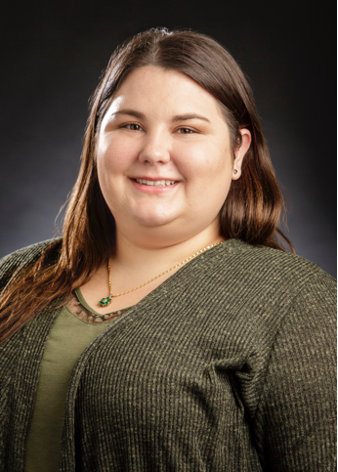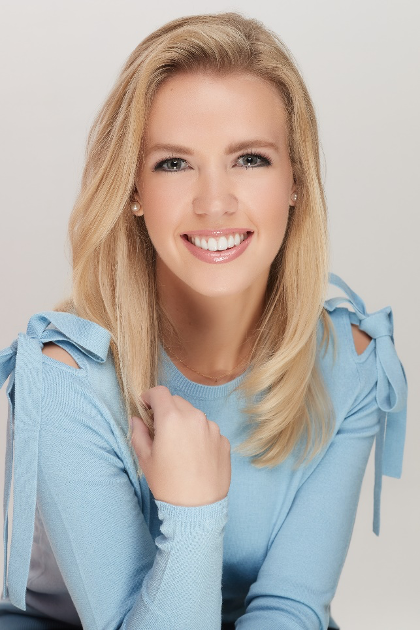Ethical Implications of Fake News for PR Professionals
Lesson 1: Lesson Plan
Public relations practitioners disseminate client information in earned, owned, and paid media. Ethically, responsibility lies in the creation of accurate information with honesty and good intent. However, as with the case of native advertising, the roles public relations, advertising, and marketing are merged. Native advertising also blurs the line between editorial and paid content. With this tactic, the content sponsor pays the publisher to distribute information in a platform that resembles the publication’s content in format and substance. Lesson 1 explores the concept of native advertising, discusses the identification of native advertising in all its forms, and provides understanding of the role native advertising plays for different entities. Lesson 1 discusses the TARES test as a tool for ethical decision making and offers a native advertising case study.
Key Concepts
Students should:
- Understand key terms related to native advertising
- Understand the role disclosure plays in native advertising
- Understand the potential effects of native advertising
- Be able to apply the TARES test to aid ethical decision making
- Be able to apply knowledge to a real world, case study
Lesson 2: Lesson Plan
Lesson 2 focuses on the various types of “fake” in “fake news.” Providing examples of past fake news occurrences, this lesson looks at the fake news and considers the public relations professionals’ response to the false information. Lesson 2 discusses the difference between misleading content, false connection, imposter sources, manipulated content, and full fabrication. A case study investigates the dissemination of fake news and asks participants to consider courses of action, consequences, and moral reasoning. In addressing the consideration of fake news for public relations professionals, Lesson 2 asks students to apply The Page Principles and the PRSA Code of Ethics. It also offers tips for public relations practitioners to avoid and manage fake news.
Key Concepts
Students should:
- Be able to define fake news
- Understand and be able to identify the levels of fake news content
- Understand how fake news is disseminated. Through case study analysis, students should be able to understand the ethical dilemma, course of action, consequences, and potential responses
- Be able to apply the Page Principles to manage ethical dilemmas related to fake news, while considering the best courses of action and decision consequences
- Be able to offer recommendations for combatting fake news content
Resources
Module Overview
News stories reported that “Trump’s grandfather was a pimp and tax evader; his father was a member of the KKK.” They also reported of “Nancy Pelosi diverting Social Security money for the impeachment inquiry.” However, neither of the stories are true.
Yet, they provided the basis for the top two, fake news stories on Facebook in 2019. According to an Avaaz report, the top 100 fake news stories in 2019 were viewed more than 150 million times. In turn, this false information could have reached every registered voter at least once (Gilbert, 2019).
Fake news impacts both media trust and credibility. Fake news is defined as content that is intentionally misleading, sensationalized, or deliberately false (Fullerton, McKinnon, and Kendrick, 2020).
The convergence of media and the ease of sharing on social networks allows for quick dissemination of both truthful and false information. For public relations professionals, both the way we shape clients’ messages and how we respond to mediated messages contribute to the public conversation.
Not only is fake news in itself troubling, but the public also contributes to its dissemination.
Silverman (2016) reports that the “Top 20 Fake News” stories of 2016 received more engagement than the “Top 20 Legitimate News” stories that year.
In fact, individuals often share fake news story via their social media outlets. Wyatt (2006) suggests that an understanding of media literacy can serve as a trust builder. For strategic communicators, media literacy is important for both analyzing media content and for creating PR messages, advertising copy, audio and video content, and multimedia applications.
In the fake news environment, PR practitioners can help the public distinguish between truthful and misleading content. The Page Principle “Conduct public relations like the whole organization depends on it” places emphasis on the managerial function of public relations. Practitioners must work to express stakeholder views, values, experience, expectations and aspirations.
As content creators, practitioners are responsible for information disseminated in earned, owned, and paid media. With fake news, the original source of the message is difficult to determine. Sponsored posts, personal blogs, lack of bylines, promoted content, self-publication and the use of native advertising allows for content to mimic traditional news.
Sensationalized headlines and click-bait often lead to stories that earn advertising revenue. Ethically, PR practitioners should consider the content they are distributing and its transparency. The Page Principle “Tell the Truth” calls for the creation of accurate information with honesty and good intent.
There also are important ethical implications for practitioners to consider when their client is the target of a fake news story. First, the level of truth/falseness must be considered. Next, practitioners must develop a strategic response to combat the misinformation.
As practitioners, we must “Prove It with Action.” This Page Principle tells us the organization is judged based on 90 percent of what it does and on 10 percent of what it says. In a fake news environment, practitioners should “Remain Calm, Patient, and Good Humored.” Client response to a fake news crisis, provides the groundwork for reasoned attention to information from stakeholders and for shaping the public conversation with accurate information.
Citations & ResourcesModule 12, Introduction References
Gilbert (6 Nov. 2019). The 10 most-viewed fake-news stories on Facebook in 2019 were just revealed in a new report. Business Insider. Retrieved from https://www.businessinsider.com/most-viewed-fake-news-stories-shared-on-facebook-2019-2019-11
Fullerton, J. A., McKinnon, L. M. & Kendrick, A. (2020). Media literacy among public relations students: An analysis of future PR professionals in the post-truth era. Journal of Public Relations Education, 6(2), 1-25.
The Page Principles. The Arthur W. Page Center: For Integrity in Public Communication. Retrieved from https://www.bellisario.psu.edu/page-center/about/arthur-w-page/the-page-principles
Silverman,C. (2016, Nov. 16). This analysis shows how viral fake election news stories outperformed real news on Facebook. Buzz Feed News. Retrieved from https://www.buzzfeednews.com/article/craigsilverman/viral-fake-election-news-outperformed-real-news-on-facebook.
Wyatt, W. N. (2006). Media literacy as a trust builder: How media education can foster critical and sympathetic news audiences. Paper presented at the association for journalism and mass communication, San Francisco, CA.
Module 12, Lesson 1 References
Ahmad, I. (2018, February 16). The Influencer Marketing Revolution [Infographic]. Retrieved from https://www.socialmediatoday.com/news/the-influencer-marketing-revolution-infographic/517146/
Appelman, A., & Sundar, S. S. (2015). Measuring message credibility. Journalism & Mass Communication Quarterly, 93(1), 59-79. doi:10.1177/1077699015606057
Baker, S. (1999). Five baselines for justification in persuasion. Journal of Mass Media Ethics, 14(2), 69–81. doi: 10.1207/s15327728jmme1402_1
Baker, S., & Martinson, D. L. (2001). The TARES Test: Five principles for ethical persuasion. Journal of Mass Media Ethics, 16(2-3), 148–175. doi: 10.1080/08900523.2001.9679610
Benway, J.P., 1998. Banner Blindness: The irony of attention grabbing on the world wide web. Proceedings of the Human Factors and Ergonomics Society Annual Meeting, 42(5), 463–467.
Bok, S. (1989). Lying: moral choice in public and private life. New York: Vintage.
Boland, M. (2016, June 14). Native ads will drive 74% of all ad revenue by 2021. Retrieved from https://www.businessinsider.com/the-native-ad-report-forecasts-2016-5?utm_source
Cameron, G.T., and Ju-Pak, K. (2000), “Information pollution?” Newspaper Research Journal, 21(1), 12-23.
Conill, R. F. (2016). Camouflaging church as state. Journalism Studies,17(7), 904-914. doi:10.1080/1461670x.2016.1165138
Cooper, T., & Kelleher, T. (2000). Remarks in discussion among fellows. Colloquium 2000: Ethics of Persuasion.
Cunningham, S. B. (2000). Remarks in discussion among fellows. Colloquium 2000: The Ethics of Persuasion.
Deaver, F. (1990). On defining truth. Journal of Mass Media Ethics, 5(3), 168–177. doi: 10.1207/s15327728jmme0503_2
Demographics of social media users and adoption in the United States. (n.d.). Retrieved from https://www.pewresearch.org/internet/fact-sheet/social-media/
Deziel, M. (2014, June 12). Women inmates separate but not equal. Retrieved July 14, 2020, from https://www.nytimes.com/paidpost/netflix/women-inmates-separate-but-not-equal.html
Disclosures 101 for social media influencers. (2019, November 7). Retrieved from https://www.ftc.gov/tips-advice/business-center/guidance/disclosures-101-social-media influencers
Fitzpatrick, K., & Gauthier, C. (2000). Remarks in discussion among fellows. Colloquium 2000: The Ethics of Persuasion.
Fullerton, J. A., McKinnon, L. M., & Kendrick, A. (2020). Media literacy among public relations students: An analysis of future PR professionals in the post-truth era. Journal of Public Relations Education, 6(2), 1-25.
Gauthier, C. (2000). Remarks in discussion among fellows. Colloquium 2000: The Ethics of Persuasion. Kidder, R. M. (2009). How good people make tough choices: resolving the
dilemmas of ethical living. New York: Harper.
Hall, K. (2016, Sept. 30). The importance of authenticity in influencer marketing. Sprout Content. Retrieved from https://www.sproutcontent.com/blog/the-Importance-Ofauthenticity-in-influencer-marketing
Hot Wheels, brand publisher. (2018, February 06). 10 mind-blowing benefits of playtime that every parent should know about. Buzzfeed. Retrieved July 14, 2020, from https://www.buzzfeed.com/mattelhotwheels/playtime-is-fundamental
Hsieh, Y. C., Chen, K. H. & Ma, M. Y. (2012). Retain viewer’s attention on banner ad by manipulating information type of the content. Computers in Human Behavior, 28(5), 1692–1699.
Hyman, D., Franklyn, D., Yee, C. & Rahmati, M. (2017), Going native: Can consumers recognize native advertising? Does it matter? Yale Journal of Law and Technology, 19,(2), 79-111.
Ikonen, P., Luoma-Aho, V., & Bowen, S. A. (2016). Transparency for sponsored content: Analyzing codes of ethics in public relations, marketing, advertising and kournalism. International Journal of Strategic Communication, 11(2), 165-178. doi:10.1080/1553118x.2016.1252917
Karp, K. (2016, May 10), New research: The value of influencer on Twitter. Twitter. Retrieved from https://blog.twitter.com/ 2016/new-research-the-value-of-influencers-on-twitter.
Kirwan, D. (2018, August 21). Council post: Are social media influencers worth the investment? Retrieved from https://www.forbes.com/sites/forbesagencycouncil /2018/08/21/are-social-media-influencers-worth-the-investment/#4f07b874f452
Lehto, M., & Moisala, V. (2018). Defining Branded Journalism[PDF]. Retrieved from https://www.academia.edu/7331254/Defining_Branded_Journalism
Lou, C., & Yuan, S. (2019). Influencer marketing: How message value and credibility affect consumer trust of branded content on social media. Journal of Interactive Advertising, 19(1), 58–73. doi: 10.1080/15252019.2018.1533501
Mahdawi, A. (2018, May 16). Kim Kardashian West shocks fans with ad for appetite-suppressing lollipops. The Guardian. Retrieved from https://www.theguardian.com/lifeandstyle/2018/may/16/kim-kardashian-instagram-advert-lollipop-appetite-suppressing-scandal
Martinson, D. L. (1999). The public interest must take precedence. Journal of Mass Media Ethics, 14, 120–122.
Moore, J. D. (2014). “News goes native: An examination of online media's disclosure practices for sponsored content,” (master’s thesis). Retrieved from http://digitalcommons.unl.edu/cgi/viewcontent.cgi?article=1044&context=journalismdiss
Moyers, B. (1999). Free speech for sale. In Public Affairs Television (Producer). Retrieved from https://billmoyers.com/content/free-speech-for-sale/
Native advertising: The official definition. (n.d.). Retrieved from https://www.sharethrough.com/nativeadvertising/
Nzengung, C. (2019, Jan. 3). Kim Kardashian is back promoting Flat Tummy Co and the internet is not happy. InStyle. Retreived from https://finance.yahoo.com/news/kim-kardashian-back-promoting-flat-221500288.html
Nee, R. (2019). Youthquakes in a post-truth era: Exploring social media news and verification actions among global teens and young adults, Journalism & Mass Communication Educator 74(2), 171-184.
Patterson, P., & Wilkins, L. (2014). Media ethics: Issues & cases. Boston: McGraw-Hill Education.
Public Relations Society of America. (2020). Public Relations Society of America member code of ethics. Retrieved from https://www.prsa.org/about/ethics/prsa-code-of-ethics
Schauster, E. E., Ferrucci, P., & Neill, M. S. (2016). Native advertising is the new journalism. American Behavioral Scientist,60(12), 1408-1424. doi:10.1177/0002764216660135
Shearer, E. (2018). Social media outpaces print newspapers in the U.S. as a news source. Pew Research Center. Retrieved from, https://www.pewresearch.org/fact-tank/2018/12/10/social-media-outpaces-print-newspapers-in-the-u-s-as-a-news-source/
Society of Professional Journalists. (2014, Sept. 6). SPJ Code of Ethics[PDF]. Retrieved from https://www.spj.org/ethicscode.asp
Swant, M. (2016, May 10), Twitter says users now trust influencers nearly as much as their friends. Adweek, http://www.adweek.com/digital/twitter-saysusers-now-trust-influencers-nearly-much-their-friends171367/
Sweetser, K. D., Ahn, S. J., Golan, G. J., & Hochman, A. (2016). Native advertising as a new public relations tactic. American Behavioral Scientist, 60(12), 1442-1457. doi:10.1177/0002764216660138
Talavera, M. (2015, July 14), 10 reasons why influencer marketing is the next big thing. Adweek. Retreived from http://www.adweek.com/digital/10-reasons-why-influencer-marketing-is-the-next-big-thing
Waltz, S. L. (1999). A list of acid tests. Journal of Mass Media Ethics, 14, 127–128.
What are eating disorders? (2019, June 26). National Eating Disorders. Retrieved from https://www.nationaleatingdisorders.org/what-are-eating-disorders
Wojdynski, B.W., & Golan, G.J. (2016), Native advertising and the future of mass communications. American Behavioral Scientist 60(12), 1403-1407.
Wojdynski, B. W., & Evans, N. J. (2015). Going native: effects of disclosure position and language on the recognition and evaluation of online native advertising. Journal of Advertising,45(2), 157-168. doi:10.1080/00913367.2015.1115380
Wojdynski, B. W. (2016). The deceptiveness of sponsored news articles. American Behavioral Scientist,60(12), 1475-1491. doi:10.1177/0002764216660140
Wong, J. C. (2018, August 29). How Flat Tummy Co. gamed Instagram to sell women the unattainable ideal. The Guardian. Retrieved from https://www.theguardian.com/media/2018/aug/29/flat-tummy-instagram-women-appetite-suppressant-lollipops
Zoellner, D. (2020, Jan. 19). Khloe Kardashian is branded ‘morally bankrupt’ after promoting Flat Tummy tea again, insisting it ‘really works’ – despite admitting she uses a trainer and a nutritionist to keep her in shape. Daily Mail. Retrieved from https://www.dailymail.co.uk/femail/article-7870425/Khloe-Kardashian-slammed-promoting-weight-loss-product-AGAIN.html.
Module 12, Lesson 2 References
Aisch, G., Huang, J., & Kang, C. (2016, December 10). Dissecting the #PizzaGate conspiracy theories. The New York Times. Retrieved July 10, 2020, from https://www.nytimes.com/interactive/2016/12/10/business/media/pizzagate.html
Andros, D. (2020, January 06). Babylon Bee Editor-In-Chief responds to latest criticism from CNN. Faithwire. Retrieved July 10, 2020, from https://www.faithwire.com/2020/01/06/babylon-bee-editor-in-chief-responds-to-latest-criticism-from-cnn/
Conill, R.F. (2016, April 6), “Camouflaging church as state,” Journalism Studies,17(7) p. 904-914.
Conger, K. (2020, June 11). Twitter removes Chinese disinformation campaign. The New York Times. Retrieved July 18, 2020, from https://www.nytimes.com/2020/06/11/technology/twitter-chinese-misinformation.html
Ewing, M., & Lambert, C. A. (2019, September). Listening in: Fostering influencer relationships to manage fake news. Public Relations Journal, 12(4). Retrieved from https://prjournal.instituteforpr.org/wp-content/uploads/Listening-In-Updated-090519.pdf
Fandos, N. (2017, January 22), White House pushes ‘alternative facts.’ here are the real ones, The New York Times Retrieved from https://www.nytimes.com/2017/01/22/us/politics/president-trump-inauguration-crowd-white-house.html
Flaherty, A., & Woodward, C. (2018, May 29). AP FACT CHECK: 2014 photo wrongly used to hit Trump policies. Retrieved July 10, 2020, from https://apnews.com/a98f26f7c9424b44b7fa927ea1acd4d4/AP-FACT-CHECK:-2014-photo-wrongly-used-to-hit-Trump-policies
Fullerton, J. A., McKinnon, L. M., and Kendrick, A. (2020). Media literacy among public relations students: An analysis of future PR professionals in the post-truth era. Journal of Public Relations Education, 6(2), 1-25.
Heil, E., & Farhi, P. (2019, January 17). Fake editions of The Washington Post handed out at multiple locations in D.C. The Washington Post. Retrieved July 10, 2020, from https://www.washingtonpost.com/lifestyle/style/fake-editions-of-the-washington-post-handed-out-at-multiple-locations-in-dc/2019/01/16/1d6a0402-19a5-11e9-88fe-f9f77a3bcb6c_story.html
Keith, (2018, Sept. 2). President Trump’s description of what’s ‘fake’ is expanding. NPR. Retrieved from https://www.npr.org/2018/09/02/643761979/president-trumps-description-of-whats-fake-is-expanding
Klein, D., & Wueller, J. (2017, April). Fake news: A legal perspective. Journal of Internet Law. Retrieved from https://papers.ssrn.com/sol3/papers.cfm?abstract_id=2958790
Mitchell, A., Holcomb, J., & Barthel, M. (2020, May 30). Many Americans believe fake news is sowing confusion. Retrieved July 18, 2020, from https://www.journalism.org/2016/12/15/many-americans-believe-fake-news-is-sowing-confusion/
Page, A. W. (n.d.). The Page Principles. Retrieved July 10, 2020, from https://www.bellisario.psu.edu/page-center/about/arthur-w-page/the-page-principles
Rutenberg, J., & Zernike, K. (2004, September 21). CBS apologizes for report on Bush Guard Service. The New York Times. Retrieved July 10, 2020, from https://www.nytimes.com/2004/09/21/politics/campaign/cbs-apologizes-for-report-on-bush-guard-service.html
Silverman, C. (2016, November 16). This analysis shows how viral fake election news stories outperformed real news on Facebook. Buzzfeed. Retrieved July 18, 2020, from https://www.buzzfeednews.com/article/craigsilverman/viral-fake-election-news-outperformed-real-news-on-facebook
Tandoc, E. C., Lim, Z. W., & Ling, R. (2018). Defining “Fake News”. Digital Journalism, 6(2), 137-153. doi:10.1080/21670811.2017.1360143
The Babylon Bee (2020). Retrieved July 10, 2020, from https://babylonbee.com/news?sort=trending
Module Developer

Dr. Lori McKinnon
Associate Professor, Oklahoma State University, Oklahoma State University
Lori Melton McKinnon is an associate professor in the School of Media and Strategic Communications at Oklahoma State University. Her research focuses on media ethics education for public relations and advertising students. McKinnon’s research in political communication also looks at ethical applications. She is especially interested in the mediated effects of political campaign communication. McKinnon has published dozens of academic journal articles on the topics of national and international political advertising, political public relations, political adwatches, and presidential debate coverage Additionally, she has published numerous book chapters on various topics in political communication and a book on the 1996 Romanian presidential election. McKinnon collaborates with other university scholars to study presidential elections.

Diana Haslett
Master's student, Oklahoma State University, Oklahoma State University
Diana Haslett received her bachelor’s degree in journalism with an emphasis in electronic communication from the University of Oklahoma. After a few years working at a broadcast news station she began working with a public-school system teaching broadcast and media literacy courses. She adjuncts at a local technical school and teaches professional development courses for Oklahoma educators. Diana is currently completing a master’s degree in Mass Communication from Oklahoma State University. Her research interests include media ethics and media literacy.

Julianne Thomison
Graduate research assistant, Oklahoma State University, Oklahoma State University
Julianne Thomison graduated from Oklahoma City University magna cum laude in three years, earning a degree in Mass Communication with an emphasis in Broadcasting and a double minor in Theater and Chinese. After graduation, she moved to Stillwater, Oklahoma and now works as a graduate research assistant for the Division of Agricultural Sciences and Natural Resources at Oklahoma State University. She is also pursuing a Master of Science in Mass Communication. Her research interests include: anti-texting and driving initiatives, pop culture and political influencers, and broadcast television.